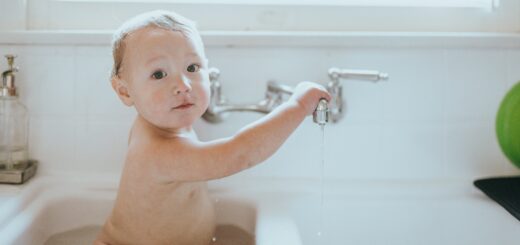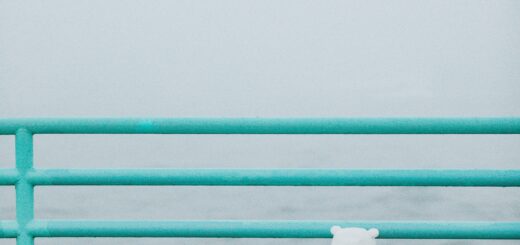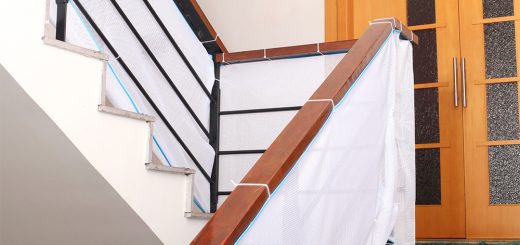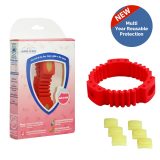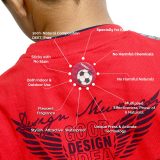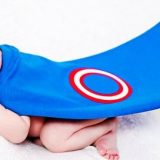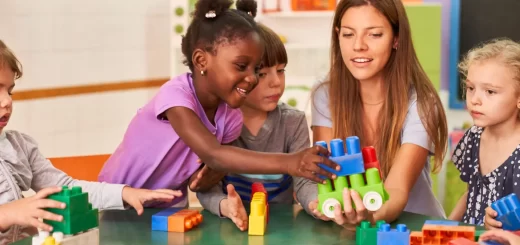Baby Safety: How to Ensure a Safe Upbringing?
Creating a safe environment for your new baby is a crucial component of caring for them. Babies must be kept safe both at home and away from home. You can help keep your kid safe and secure by doing some easy things. If you have any worries about your baby, always seek medical advice. However, you must learn some baby safety hacks that are necessary for your toddler.
Injuries
Injury is the leading cause of death in children over the age of one and a key reason for youngsters requiring medical attention. The majority of injuries to babies are not caused by chance or bad luck and are not determined by fate. The bulk of injuries are predicted and, for the most part, avoidable. Instead of ‘accident,’ the term ‘injury’ is now used. Babies are lively, curious, and frequently agitated by nature. All of these characteristics put individuals in danger of damage. You can do a lot as a parent or caregiver to keep your child safe. Some key areas to keep in mind are:
- Return home with your kid in a pod or other proper child restraint facing the rear of the car.
- Always keep your youngster in a baby safety seat when traveling in a vehicle.
- Create a safe bedtime routine for your baby, which includes taking precautions to limit the risk of SIDS (Sudden Infant Death Syndrome) and deadly sleep accidents.
- Maintain a secure environment at home.
- When you’re not at home, make sure your surroundings are safe.
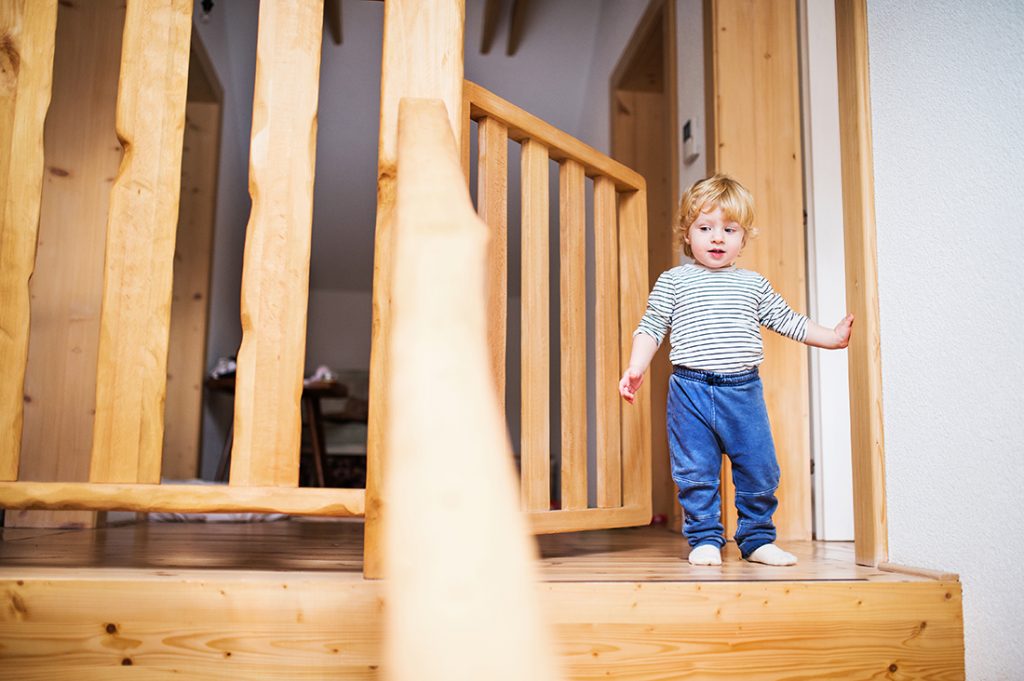
Baby safety while Travelling
Babies learn from their surroundings. They imitate what grownups do when driving. When working with infants and small children, make absolutely sure you behave safely and ethically. When travelling by car, babies under the age of six months must be restrained in a backwards-facing child restraint. Children under the age of seven must ride in an authorized baby safety seat or booster seat, according to the legislation. Baby Safety issues to keep in mind are:
- If your car has two or more rows of seats, children under the age of four must travel in the back seat. Travelling in the rear seat is actually safer for underage children.
- Never leave your baby alone in the car; the temperature inside a car can quickly rise to dangerously high levels. Moreover, babies and children are susceptible to overheating. In hot temperatures, avoid long car excursions.
- Always use restraint on any trip, no matter how brief. The majority of car accidents happen close to home.
- Always enter and exit the vehicle on the curbside, away from roads.
- Never reverse the vehicle until you’ve located your youngsters.
Baby safety at home
Because newborn infants have very little immunity to illness, it is critical that you create a clean environment for them. Everyone who comes into contact with your kid, including yourself, must wash their hands first. Infected people should avoid coming into contact with their newborns. A newborn baby is especially vulnerable to cold sores. Vaccines are sufficient to protect your child from some infectious diseases. You can get advice from your maternity and child health nurse.
Because babies develop skills quickly, adults may be caught off guard, resulting in injury. Understanding a child’s growth will assist you in making Baby safety plans. In the early years, different hazards emerge, and change happens quickly.
You must take care of the following key points:
- Keep an eye on small children when they are around the baby.
- Keep pets away from the infant. Some pets may be upset by the shift in the house when a new infant arrives.
- Avoid drinking hot beverages while carrying your baby to avoid major scald burns.
- Put your baby away in a safe place when changing them, such as on a changing table with raised sides to avoid the baby from rolling off. Always remember to maintain one arm on the infant. On the changing table, never leave your infant alone. Some parents consider changing their infant on the floor to avoid falling.
- Keep scalds at bay in the bathroom. Reduce the hot water temperature to 50°C in the basin, bath, and shower, or install a thermostatic blending or moderating valve.
- Install door barriers between the kitchen and the bathroom.
- Keep medicines and cleaning supplies out of reach and in secure cabinets.
- Choose age-appropriate foods to avoid choking.
- Avoid giving your kid raw carrot and apple chunks. To avoid choking, shred, grate, or steam firm fruits and vegetables. Kids under the age of 5 should avoid peanuts. Teach children to eat quietly and enjoy a leisurely lunch.
- Be wary of items like lollipops, pork, and nuts that might choke children.
- Keep hot tea/coffee cups out of children’s reach.
- When children are bathing, stay with them at all times.
- Install a fixed barrier around radiators and open flames, install smoke alarms and practice your evacuation plan.
- Keep nappy buckets off the floor and ensure that they have a hard, well-fitting lid.
Safe Bathing tips:
While giving your child a bath:
- Always keep an eye on them in the tub. At all times, you are within arm’s length of the youngster.
- Do not hold the baby up inside the bath with a baby supporter or bath seat.
- Never leave a small kid in the bath alone with an older child.
- Take your youngster with you if your phone or doorbell rings.
- Immediately empty the bath after each usage.
- Every time close the doors to the restroom and laundry room are tightly shut to avoid drowning.
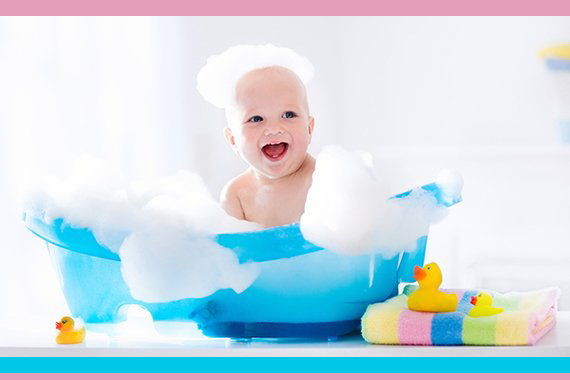
Safe Sleeping:
Many parents are concerned about SUDI, or sudden unexpected death in infancy, which encompasses SIDS and fatal sleep accidents. According to research, there are a few simple things that you could do to lower your risk:
- Breastfeeding your infant produces crucial immunological components, such as antibodies, that can help prevent babies from SIDS. Breastfed newborns are also much more easily roused from sleep around the age of two to three months when SIDS is most common.
- Keep fluffy toys, ‘bumpers,’ and covers out of the crib or bassinette since they can cause newborns to overheat or suffocate.
- Cover the bottom of the bed with covers and sheets, much like a regular bed. Place your infant in the cot with the feet at the bottom.
- When your infant is sleeping, keep their head exposed.
- Do not allow anyone to smoke in your home, car, or near you.
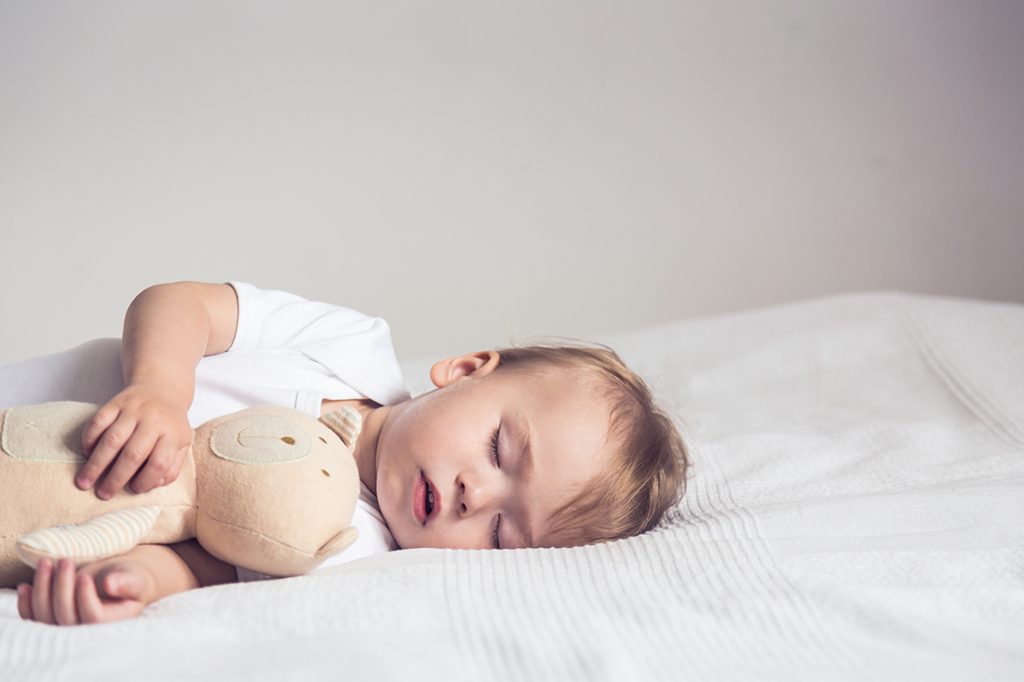
Pets:
- Never leave your child inside a place with a pet or any other animal. Even if your pet appears benign, it may perceive your infant as a threat and attack him.
- If your baby swallows marbles, magnets, or toys with small unsecured pieces or buttons, these can cause serious harm. Toys for babies should not feature chewable or swallowable parts. Toys should not be tied to the cot. The string can tangle the neck, fingers, and toes. Any toy small enough to pass through the cardboard toilet paper roll is out of reach for youngsters under the age of three.
Baby Safety Guidelines:
Updated Baby safety guidelines were made in 2011 to ensure safer cribs for babies. Check out the Consumer Product Safety Commission’s website (http://www.cpsc.gov).
- The distance between crib spindles should not be any greater than 2-3/8 inch.
- Double-check that all connections are secure and that no faulty screws, plastic pieces, or springs are present.
- Examine the area for flaking paint or broken wood.
- The bedding should fit snugly in the crib, with no gaps where your infant could become trapped or stuck.
- Cushions, quilts, and stuffed animals should not be allowed in cribs.
- Wrap the mattress with a tight-fitting sheet.
- Remove any hanging cords from shades, lamps, or mobiles that may be near the crib.
- Cushions, quilts, blankets, bumper pads, and stuffed animals should not be allowed in playpens.
High Chair: A high chair can be used once the baby is 4 to 6 months old and thus can sit in a chair without assistance. To avoid tipping over, the bottom must be broader than the head of the chair. Make absolutely sure the tray is securely fastened. When your infant is already in the high chair, always utilize a five-point harness.
Smoke detectors: They must be placed in the house and tested on a regular basis to ensure that they are working properly.
Infant Swing: An infant swing can help calm crying babies. Always secure the infant in the swing with a five-point harness, but never leave the baby alone in a swing. If indeed the baby falls asleep, gently take him from it and place him on his back in his crib.
Height: Ensure that the baby is correctly strapped in and keep infant seats away from high surfaces. Keep youngsters from falling off tables, couches, beds, or chairs. If car seats are to be used as carriers, they should be positioned on a firm, flat floor with little risk of tipping. Car seats should never be used for sleeping.
Baby Walkers: They are a bad idea and should be avoided! They are not required for children to learn to walk, and they can be extremely harmful. Every year, many babies are critically harmed when they fall out of their walkers.
Water Safety
Drowning is 2 most common cause of injury mortality in children aged 1 to 4 years in the United States and the fifth most common cause of injury death in infants younger than 1 year.
- Never, ever, ever leave your youngster alone in the tub, hot tub, or backyard pool. Take your kids with you if you have to leave for any reason. In a bit of water, small kids can drown extremely fast. To avoid the baby from skidding while bathing, use a plastic dishpan or baby tub with an anti-skid mat. Also, to avoid burning the baby’s sensitive skin, always check the water using your elbow first).
- To avoid burns, set hot water heaters to 120 degrees Fahrenheit.
- Infants have died while using bath chairs, so always keep your kid within reach. If you’re using a bath seat, cease using it once your child is old enough to stand on his or her own. Bath seats can fall over, allowing infants and toddlers to escape. The vacuum devices that hold the seat with the tub floor can get detached. Bath seats for babies are not safety equipment, and they do not replace parental monitoring.
- Don’t leave containers or inflatable pools with water in them lying about. Babies can drown if they fall headfirst.
Crawling:
- Long or sharp things, including spoons, and Popsicle sticks, might be dangerous as your infant begins to crawl or walk. This might hurt him if he falls with the item in his mouth or nearby eyes.
- Unused outlets should be covered, and furniture must be attached to walls to prevent the toddler from dragging it over and injuring himself. Also, to avoid harm, electric cables should be fastened to the ground or hidden under carpets.
- Just at the top and bottom of the stairs, safety gates should be installed, and second-floor windows should be secured or have a window guard installed to prevent youngsters from slipping through the screen.
- Keep your purse out of reach of your toddler if you have medicine, cigarettes, or lighters in it. Move cleaning supplies and medications to higher shelves, or install safety latches on lower shelves.
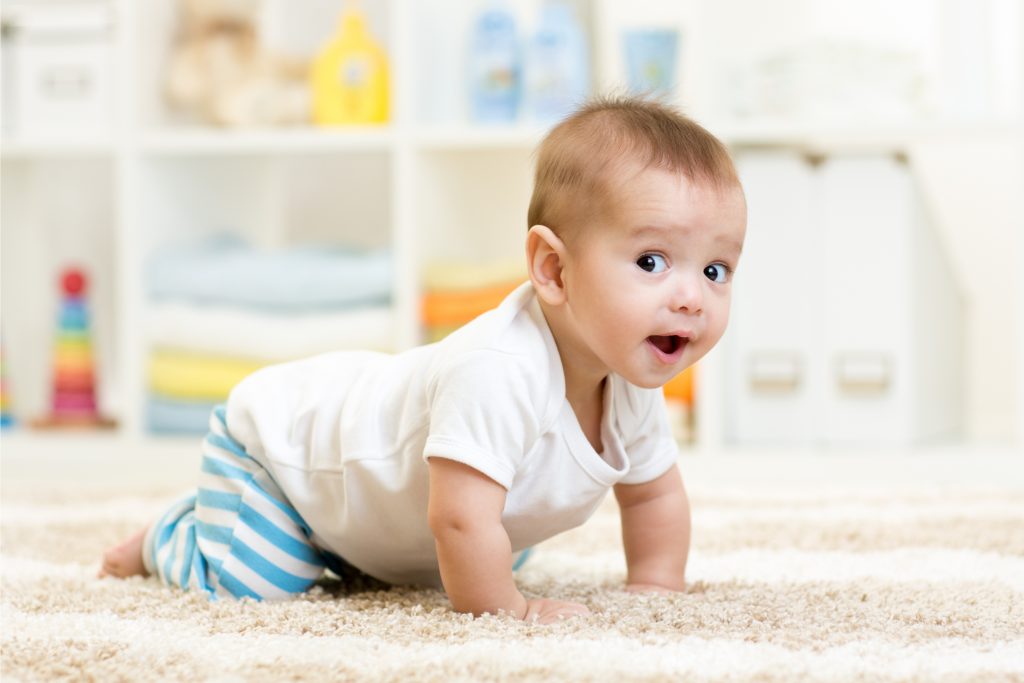
Baby Safety Kit:
Safe-O-Kid Knee Safety Pad
One of life’s most cherished moments for any parent is watching their children crawl. While this may appear to be a fun phase at the time, you may not notice your child is unhappy until you figure out why he or she is sobbing all the time. Thankfully, knee protectors are available. It’s time to get a knee-safety pad if your youngster has only recently started crawling.
One of the finest solutions currently available is the Safe-O-Kid Knee Safety Pad. This knee safety pad is designed to give your child the most protection possible while learning to walk. The airy and silky fabric of this safe-o-kid knee safety pad is appealing.
Safe-O-Kid Safety lock
You really would like to leave no question unanswered for your children’s protection. Your child may grasp for items that could endanger his or her safety. The Safe –O- Kid Safety Lock secures cupboards and windows so that your child cannot open them aggressively and damage himself. The baby proof safety kit from Safe-O-Kid includes a safety lock that prevents your child from reaching and opening the cabinets.
Safe-O-Kid Gas Knob
It’s possible that your little bundle of joy enjoys making meals for you. However, we all know that now is not the moment. Gas knobs, thankfully, protect your child from mistakenly turning on the burner. You may now effortlessly install gas without the use of any tools or equipment, and it only takes seconds. Also, the child safety Kit from Safe-O-Kid includes two gas knobs that prevent damage. The nicest aspect is that it is transparent, allowing you to see whether the burner is turned on or off.
Safe-O–Kid Fruit Nibbler
A fruit nibble is a crucial product for your baby’s development. It instils the habit of independent feeding, which is undoubtedly a time a mother longs for. After the baby has reached the age of six months, a mother can offer her baby a fruit bite. It makes feeding newborns much easier and more convenient for mothers because they don’t have to chase after their children. A fruit nibbler, on the other hand, can provide the infant with all of the necessary nutrients. The Safe-O-Kid Baby Proofing Kit includes a BPA-free fruit nibbler that is both safe and non-toxic.
Safe–O–Kid Anti Shock Cover
Installing Anti Shock Cover in open sockets is one of the most critical infant safety baby products to prevent injury to your children. Your baby may reach out accidentally to these exposed outlets, which can be fatal. It is quite tough to remove once it has been implanted. Anti-shock covers are simple to install and may be done in seconds.
Safe-O-Kid Corner Guard
You may not like the look of a corner guard or believe it is not appropriate for your home, but it is a critical baby need that you should not neglect. The first time you watch your baby move about the house is undoubtedly thrilling. However, you may need to be cautious about your baby’s safety as a result of this. Because your baby is starting to walk, it’s important to note that they may not be steady and could collide with any corner of the room. As a result, parents must consider installing a corner guard. The Safe-O-Kids baby Safety kit includes multiple corner guards of various sizes and shapes.
Baby Safety: FAQ
How can I keep my baby safe at home?
Warm meals and beverages should be kept out of grasp and far from the edge of a countertop or table. Blades and other sharp instruments should be kept out of reach or in drawers or cabinets that are locked or “childproof.” Also, appliance cords should be wound up and kept out of reach. To prevent your youngster from opening and closing cabinet drawers, install locks.
What are the common problems in newborns?
Colds, coughing, fevers, and vomiting are all common health issues in babies. Diaper rash and cradle cap are typical skin disorders in babies. The majority of these issues are minor. It’s critical to understand how to assist your ill child, as well as the warning signals of more serious issues.
What does baby safe mean?
According to the law, a parent may leave an uninjured child up to sixty days old in the care of hospital workers, firefighters, or a certified Emergency Medical Service Provider without question or consequence.
What are the most common types of accidents among infants?
- Falls.
- Fires.
- Scalds and burns.
- glass-related accidents.
- Poisoning.
- Suffocating and choking.
- Strangulation including blind cords.
- Drowning.
At what age is it OK to kiss a baby?
It is natural for parents to kiss their children, but it is also critical that the parent protects the child from dangerous illnesses. One of the most important things to remember is that no one should kiss your infant on or near the lips during the first three months after birth.
What is not safe for babies?
Sugar should be avoided by children under the age of 24 months. Avoid foods high in sodium (salt), such as tinned food, processed foods, and frozen dinners. Salt levels are high in several snacks and store-bought toddler feeds.
How can I protect my baby’s head from falling?
Your infant will not fall if you use safety belts. On shopping carts, strollers, high chairs, changing tables, car seats, baby seats, and baby swings, always utilize the kid safety belts.
What are signs of stress or distress in babies?
- hiccupping.
- frowning.
- looking away.
- yawning.
- sneezing.
- squirming.
- frantic, disorganized activity.
- arms and legs pushing away.
What is the safest way to hold a baby?
Shoulder hold: Rest the baby on your chest and shoulder, using your hand to support the baby’s head and neck. Place your second hand beneath the bottom of the infant. Keep your kid safe by never holding hot beverages or cooking while holding them. When travelling up or downstairs, always keep your infant close to you.
Is it OK to pick up the baby under the arms?
Some parents may be tempted to lift their child by their forearms or wrists. This is not encouraged and can be hazardous, as it can result in a nursemaid’s elbow, also known as radial head subluxation. It occurs when the ligaments of a baby become slack, slip, and become stuck between the joints.
Why is it important to support the baby’s head?
During the first few months, your baby’s head needs a lot of support before its neck muscles become stronger. The cornerstone for all of your baby’s other movements is acquiring the strength to hold their head erect. It will assist them in rolling over, sitting up, crawling, and walking.
What is safety in early childhood?
Early childhood programs keep children safe by ensuring that their facilities, resources, and equipment are free of hazards and that all staff members follow baby safety procedures including active supervision. Also, find materials to assist staff and families in decreasing the quantity and severity of minor injuries at all locations where youngsters learn and grow.
What is abnormal behavior for a newborn?
Your baby is excessively hot, chilly, or floppy. Your infant appears to be in discomfort or cries in an odd manner or for an awfully long time. You detect any bruising or bleeding from the nose. Your infant continues to refuse to feed or vomits up feeds.
Is it OK to take your newborn out in public?
Infants can be carried out in society or outside right away, according to most pediatric health experts, as long as parents observe some basic baby safety procedures. No need to await until your child is six weeks or two months old. Getting outside, especially in nature, is beneficial to both parents and babies.
Feeding infants:
Your youngster will desire to feed himself as he grows older. Provide nutritious meals and snacks. Allow your youngster to choose how much food to consume. However, your youngster will learn to love a variety of new meals and develop appropriate eating habits over time.
When feeding your kid, keep him close to you. Choking can be caused by propping the bottle or feeding thinned food through a bottle. The liquid or formula that remains in the mouth after a bottle is tilted can cause dental problems later.
Apple pieces, grapes, popcorn, almonds, seeds, and hard chunks of raw vegetables should not be given to your kid unless he has a lot of teeth and can chew well. When well-intentioned siblings split the food with their siblings, thus choking risks arise. During mealtime, never leave your tiny child alone. Keep or handle hot drinks away from your infant at all times.
- From the age of one to two, your child’s brain requires whole milk to develop properly. Limit your daily milk intake to 2 to 3 cups (16 to 24 ounces).
- Low-fat milk is better for children over the age of two. Limit yourself to two cups (16 ounces) of milk every day.
- When possible, provide fresh fruit instead of juice. Limit yourself to 12 cups of juice every day (4 ounces).
- Limit sugary meals such as cookies, candies, and sodas. They might make your kid overweight and cause tooth decay.
- Always be sure that your toddler consumes iron-rich meals. Many young kids have low iron levels (anemia). Meat, fish, beans, leafy vegetables, whole grains, and enhanced pieces of bread and cereals all contain iron.
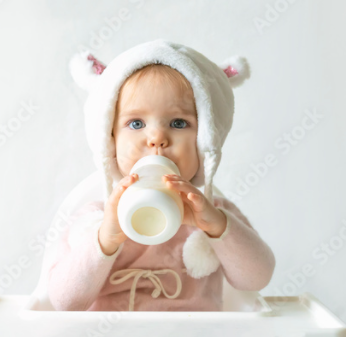
Clothing
Remove the strings from the soles of sleepers to prevent them from wrapping around the child’s neck or toes. Also, check all of your baby’s clothing for unfastened buttons or threads that can get wrapped around his or her neck, or fingers.
Prevent Choking
Toddlers are prone to choking. Choking can be avoided in several ways:
- Encourage your child to eat.
- Keep an eye on her when she eats. She won’t be able to make a noise to alert you if she chokes.
- Cut the food into small chunks. Bones, seeds, and pets should be removed.
- Make little strips out of grapes and hot dogs.
- Stay away from rough foods like huge cuts of meat and dry fruit.
- Hard foods such as raw carrots, almonds, and popcorn should be avoided.
- Enroll in a first-aid course to learn what to do if the kid chokes.
Always Keep an Eye on the Baby:
Babies have a natural curiosity. They begin to get into everything between the ages of 6 and 12. Anything they come across may end up in their mouth. They can also tip over chairs, slide down staircases, and unlock cabinets and drawers. They can be in grave danger in a matter of seconds. Most injuries can be avoided if you keep a close eye on your youngster and baby proof your home. Examine each room through the eyes of your child. Make sure your baby can safely explore and learn.
Babies and toddlers have a high risk of choking, falling, or drowning. When you’re weary or busy, such as when you’re cooking, cleaning, or talking on the phone, you’re more likely to get hurt. If your baby begins to do anything potentially dangerous, gently relocate her or distract her. Lead paint can be found in homes built before 1978. Brain injury can be caused by eating or inhaling lead chips or dust. Also, make sure the old paint is covered and not chipped. Inquire with your doctor about lead testing.
Outdoor Baby Safety:
Remember to keep your baby out of the sun and away from the wind. A simple cloth draped over the buggy may suffice, but keep it as light as possible to prevent trapping heat within the stroller. Sunshades are available at infant supply stores. We all want our children to be happy and healthy. Every day, that requires thought and work. When a newborn enters the family, parents must ensure that their child is safe.
- If you have a pool in your yard or neighborhood, ensure sure it is fenced in and has a latching or locking gate. Even better, never leave your youngster unsupervised when they are outside.
- Cover areas beneath and surrounding backyard play equipment with 9-12 inches of shock-absorbing stuff, such as sand, foam, or mulch.
- Measure the temperature of slides and swings on hot summer days. They can get so hot that they cause skin burns.
- Kids must always be supervised on playground equipment. Watch for hazards like blocked stair rungs, lacking safety barriers, protruding fasteners, and hanging ropes or cords.
- When you go to the park, teach your kids to steer clear of stray dogs and feral creatures like squirrels and raccoons, and to avoid touching animal droppings, that can contain diseases.
- Keep your youngster away from turning machineries, such as lawnmowers and garage doors that open overhead. Also, keep children away from roads and roadways as well.
- Keep your baby in the shade. Their epidermis is thinner and more delicate than other people’s. Minimize their moment in the sun by covering them with clothing and a hat.
- Avoid overheating them and remove them from the sun as soon as they show indications of burns or dehydration, such as fussiness, redness, or excessive weeping.
- Do not use bug spray on newborns under the age of two months. When bugs bite at dawn and dusk, keep them indoors. Long sleeves and slacks should be worn to protect their skin, and mesh netting should be used to cover strollers. Remove any stagnant water in your yard, such as planters and birdbaths, where mosquitoes might develop. After two months, you can use mosquito repellant on your baby’s hands but must keep it away from their eyes and mouth.
- Do not hang grocery bags from the stroller’s handles, as this may cause it to topple over.
- Follow the manufacturer’s instructions and take advantage of the baby safety features.
- Always wear your baby’s harness (even on short journeys) to prevent falls.
- Create safe play places for children by separating them from driveways and roadways. Toddlers must be within the eyesight of a grownup while outside.
- Mulch, river sand, rubber, as well as other fabrics can be used to soften the landing in the event of a fall from play equipment.
- Children should not ride on tractors, mowers, all-terrain vehicles (ATVs), or trailers.
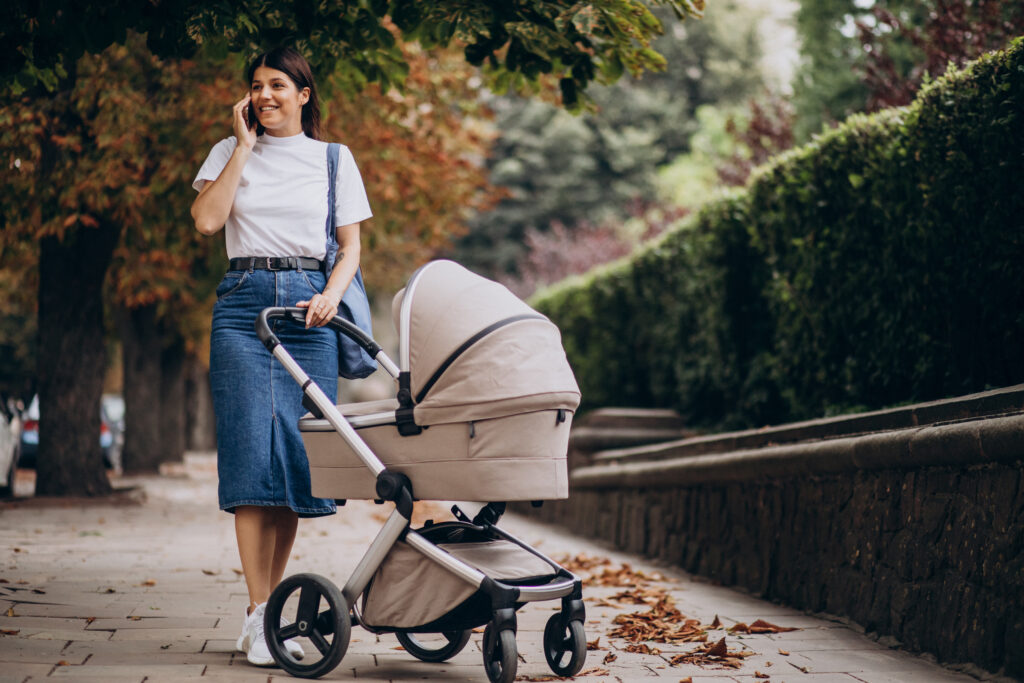
Things to consider:
- Toys should not be kept on a bookcase’s upper shelf or on top of a skyscraper dresser. Your child may tumble when climbing the furniture to grab the object.
- Do not cover your table with a tablecloth. Pulling on the fabric may cause your youngster to tumble. Additionally, objects from the table may fall on your youngster.
- Alcohol, smoking, and e-cigarettes (including e-cigarette juice) should all be kept out of reach.
- Keep blown or burst balloons and plastic bags away from little children.
- Matches and lighters should be kept in a cabinet higher than the shoulders.
- If you are not currently certified in CPR, consider taking a class. Also, a demonstration chart could be helpful to keep near your phone. CPR certification is required for your baby’s care.
- Create a list of emergency telephone numbers and keep it near your phone. Your child’s pediatrician, your care worker, your family physician, a 24-h caregiver number, the local police, the fire department, and poison management should all be included in this list.
- Keep toxic houseplants away from children. Also, all your local state extension office for information on which plants are poisonous.
- Any item that purports to assist prevent SIDS should be avoided. Home monitors, wedges, and positioners have yet to be tested.
- Assign your child to a guardian. It’s a good idea to prepare a will that designates a parent or guardian and alternative custodian for your child in case something goes wrong with you or your spouse. If you don’t have a will, the judge may choose a guardian you wouldn’t want. Make sure the people specified in your will are ready to help as your child’s guardians.
Safe-O-kid for a Safe Future of Your child:
Parenting is both a blessing and a responsibility, and every decision you make will affect your child. As a result, you must always make the best decisions for babyproofing, safety, and well-being. Safe-O-Kid is the greatest option when it comes to purchasing things for your child’s safety. Why is that?
We are a parent-focused firm that is run by people who are also parents. We understand a parent’s concerns about their child and hence supply you with baby items that are both healthy and appropriate for babyproofing. Also, we perform rigorous and stringent quality checks on the product you purchase before sending it to you. As a result, we ensure that your kid receives the greatest product available. Read more about our baby safety products here.
